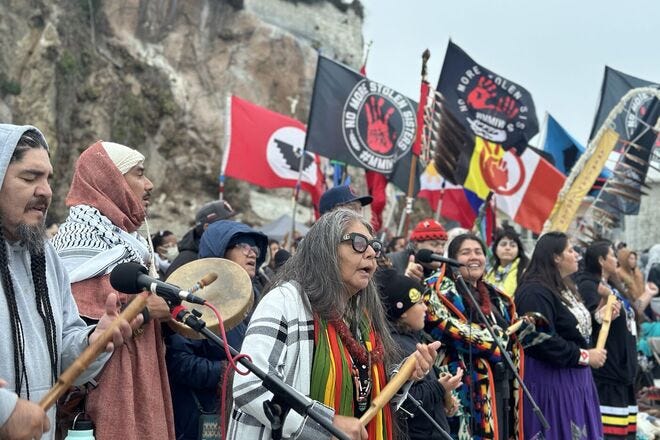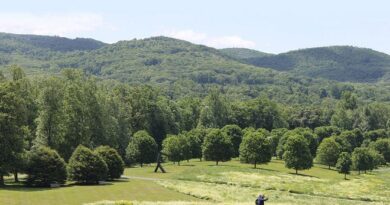How Alcatraz Island played a pivotal role in Native American history
Many who visit Alcatraz Island have no idea about its Native American history — Photo courtesy of JasonDoiy / E+
Alcatraz, the 22-acre island of sandstone rock off the coast of San Francisco, California, offers many stories for the curious traveler. Impressed by the flocks of pelicans on the island, Spanish explorer Juan Manuel de Alaya first named it “Isla de los Alcatraces” (Island of the Pelicans) in 1775. Alcatraz Island also served as a military fort during the California gold rush.
But perhaps Alcatraz’s most infamous history spans from 1934 to 1963, when the federal government turned the small island into a maximum security prison. The thinking was that a cold, mostly barren island was the best place to lock up the worst of the worst. Criminals like Al Capone and George “Machine-Gun” Kelly gave Alcatraz the nickname growled by actor Sean Connery in the 1996 smash film, “The Rock.”
This thinking wasn’t original.
Long before the island was a military fort or a prison, the Ohlone and Coast Miwok tribes used Alcatraz to isolate people who broke tribal law. The island also served as a hunting ground and a place to shelter from storms.
On November 9, 1969, after the prison’s closure, activist Richard Oakes, Akwesasne Mohawk, arrived on Alcatraz with a group of Native Americans as a symbolic occupation to reclaim the island for Indigenous peoples. Led by the charismatic Oakes, the occupation gained momentum and worldwide attention, morphing into a full-scale occupation that lasted 19 months — the longest occupation of a federal facility by Indian people in American history.
Armed federal marshals ultimately ended the occupation on June 10, 1971, but the gritty and noble protest awakened the entire nation to the plight of Native Americans. In the wake of the occupation, an official federal policy to terminate tribes (a policy most Americans were barely aware of) was replaced by a policy of Native American tribal recognition and self-determination.
In 1972, Alcatraz Island became part of the Golden Gate National Recreational Area. Today, 1.5 million people a year visit Alcatraz to explore remnants of the former notorious prison. And twice a year, for the past 45 years, thousands gather to celebrate the island’s significance in Native American history.
Indigenous Peoples Day Sunrise Gathering
 The Indigenous Peoples Day Sunrise Gathering on Alcatraz Island is open to the public — Photo courtesy of Morning Star Gali / International Indian Treaty Council
The Indigenous Peoples Day Sunrise Gathering on Alcatraz Island is open to the public — Photo courtesy of Morning Star Gali / International Indian Treaty Council
Every year on Columbus Day and Thanksgiving, The International Indian Treaty Council, a global organization that works for the rights of Indigenous tribes everywhere, hosts an Indigenous Peoples Day Sunrise Gathering, which is open to the public.
“Native American people have a very long history with Alcatraz Island,” says Morning Star Gali, the council’s community liaison and a member of the Ajumawi Band of the Pit River Tribe. “The occupation of 1969 sparked the Indigenous resistance that then spread all over the country.”
Vote Now: Best Holiday Parade (10Best Readers’ Choice Awards 2024)
The Indigenous Peoples Day Sunrise Gathering isn’t your ordinary trip to Alcatraz Island, which stays open on these holidays for the sunrise ceremonies only. She says that being without electricity, running water, and other comforts on the island during these sunrise gatherings mirrors the sad state of how many Native Americans live on reservations to this day. However, for those willing to brave these conditions, an unforgettable ceremony is the reward.
“Relatives from the local Yelamu Tribe open up the event with traditional song and prayer,” Gali says of the Native Peoples of San Francisco.
Native Americans from all over the country — even the world — attend the event wearing ceremonial headdresses and dance regalia. A large bonfire provides both light and heat, and the air often thickens with the sweet smell of burning sage, a sacred plant for many tribes.
Gali remembers the early years of these events on Alcatraz, when as few as 25 attendees greeted the rising sun. She marvels at how the gatherings have grown.
“When thousands of attendees face the dawn with their hands up, it’s an amazing moment of solidarity, of togetherness,” Gali says. “We pray for our own visibility as Native Americans and the truth to be told. And for people to pay attention to the destruction to the earth and sacred waters. We still have a ways to go, but we have come so far, which brings me comfort.”
Vote Now: Best Destination for Snow (10Best Readers’ Choice Awards 2024)
While the ceremony is full of moments of sacred silence, attendees can take advantage of the ferry ride back to San Francisco for conversation and reflection.
Any traveler interested in an eye- and mind-opening experience that offers a different view of Alcatraz — and Columbus Day and Thanksgiving — should attend.
What to know before you go
The Thanksgiving outing is usually more popular than the Columbus Day outing; although, both outings have at least 2,000 to 3,000 attendees. Alcatraz City Cruises runs ferries to the island from Pier 33, starting around 4:15 am. Be sure to check the ferry website for the latest schedule. Tickets can be purchased through City Experiences.
The ceremony lasts three hours. Those who need to sit should bring their own chairs. Packing snacks and water (hot tea in a thermos is a good idea!) is also recommended. Gali advises visitors to dress warmly and in layers for the ceremony.




